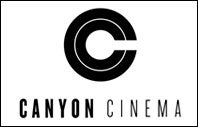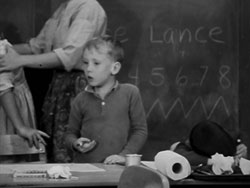A recent New York Times article sounded the alarm bell for Canyon Cinema, one of the most important distributors of avant-garde cinema in the United States. According to the report, the for-profit collective of more than 340 members/filmmakers needs at least $30,000 to even hold on, much less operate in the future. Unlike its East Coast counterpart, the Filmmaker’s Cooperative in New York (which has had its own fiscal issues in the past), Canyon Cinema never made the transition to a nonprofit status.
According to their website, Canyon Cinema had its beginnings in 1961, when Bruce Baillie started projecting 16mm films from his kitchen window onto an army surplus screen in the garden. That was a heady and exciting time on both coasts, as what we now term the New American Cinema group emerged in centers like New York, San Francisco and Los Angeles. Avant-garde filmmakers such as Jonas Mekas, Stan Brakhage, Ron Rice, Stan Vanderbeek, Jack Smith, Robert Breer, Ken Jacobs and Gregory Markopoulos were showing their work in lofts on New York’s Lower East Side, shaking up the art world and getting into trouble with the police, but failing to be taken seriously by establishment distributors. In San Francisco, Bruce Connor, Larry Jordan, Robert Nelson, Chick Strand and Lenny Lipton were having similar problems.

Thus, in January 1962, a group of avant-garde filmmakers around Jonas Mekas, including the above named, founded the Filmmaker’s Cooperative to distribute their work. Anyone could get their film distributed, no matter what its actual quality, if they became a member. Canyon Cinema took a bit longer to form, but in 1967, the collective was formally constituted. Their first catalog included 40 films by 25 filmmakers, who then as now wrote their own copy. While not every film in the catalog earned money, the popular titles helped the cooperatives cover their overhead and support everyone else.
As long as there was a burgeoning art cinema and 16mm college repertory and classroom market, both Canyon and Filmmaker’s Cooperative thrived. When I started programming a regular avant-garde series at George Eastman House in the mid-1980s, I booked films almost exclusively from both distributors. University film studies departments, which were expanding exponentially in the late 1970s and 1980s, often bought and rented their own prints, adding further income to the bottom line.

However, with most universities making the decision in the 1990s to offload their 16mm collections and projectors in favor of cheaper VHS and DVD projection, both institutions found it increasing difficult to make ends meet, as the 16mm rental market collapsed. When New York’s Filmmaker’s Cooperative was to be evicted in 2009 from a city-owned building in Tribeca, real estate tycoon Charles S. Cohen stepped in and offered them new digs on 32nd Street for a nominal fee of one dollar per year. The Cooperative had transitioned to a nonprofit more than 10 years earlier, so their future was relatively secure. Cohen, a film buff, recently purchased the legendary Raymond Rohauer Collection, and has also produced a few films.

Canyon Cinema has, on the other hand, remained a for-profit entity, making it ineligible for the kind of foundation and grant support that is an absolute necessity for any player in avant-garde cinema culture, including UCLA Film & Television Archive. Furthermore, the cost of digitization of films is still staggering, so that unless they find funding to get their films out in electronic form, as well as distributing in traditional analog formats, the economics of the operation work against them. If Canyon is to survive as a distributor, they will have to change their business model, and even that may not be enough. However, unlike the Times journalist who was interested in a doomsday narrative, I’m not worried about the films themselves surviving. There is a strong film archival community in the background—including UCLA Film & Television Archive—that would prevent such a loss, should Canyon not be able to survive on their own.






 Mobile Navigation
Mobile Navigation


Comments